#Asha Bhosle Hit Song
Explore tagged Tumblr posts
Text
sitarist jay (drabble)
genre: fluff
pairing: jay x gn south asian!reader
word count: 610
warnings: none
A/N: in honor of all the holidays coming up (holi, vaisakhi, ramadan/eid, etc.), AND also my srk x jay post that sparked desi enha discourse, this one goes out to all my desi engenes!!!! 🫶🏼 happy holi!!!! happy vaisakhi a month in advance. and a ramadan mubarak to those who celebrate.



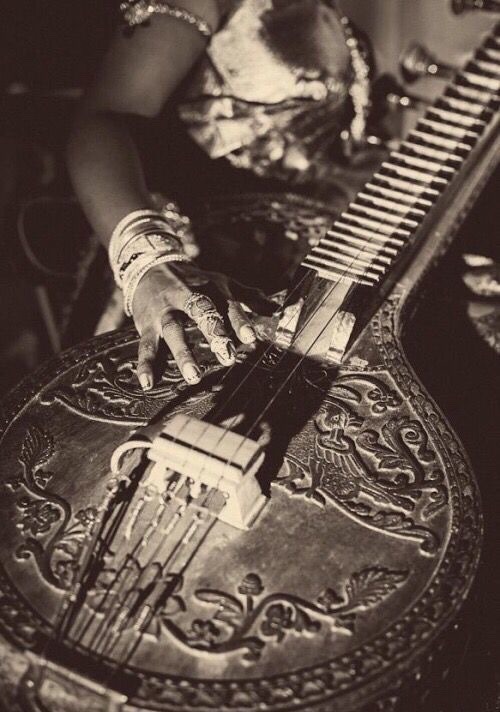

soft desi engene hours. could u just IMAGINE sitarist!jay and dholi!you!?!??? 🥺
jay is grateful to have a lover who hails from such a gorgeous, rich culture that spans millennia. and as any connoisseur of culture would say - music isn’t just part of culture….it is culture. he’s been playing guitar for many years now. and he wants to venture out into other stringed instruments. and what better way than learning the sitar?
jay enjoys the calming, soulful, and twangy sound of the sitar. it sends him into a trance and he feels completely immersed in a different world. despite it being “different” from what he’s done before, he believes that the language of music is universal - one felt within the heart first and foremost.
he holds a deep reverence for south asian music. be it nusrat fateh ali khan, kishore kumar, mohammed rafi, noor jehan, or asha bhosle, he feels the timeless, evergreen spirit of such compositions pulse within his soul.
watching him learn the sitar is an endearing sight. ethereal even! seeing the level of dedication he has towards mastering such an art form warms your heart. he wants to learn bhajans, shabads, and ghazals for you. all he wants in life is to express his love for you through music. just chillin’ in his kurtas with the sleeves rolled up and his sitar by his side, showing you the ravi shankar songs he’s learned so far.
on the other hand, he too admires you for your passion for percussion. jay loves your appreciation towards the different types of dhol. he fawns over the euphoric feeling you get when hitting every thappi and tiparu and the way you chant your DHAs and DHINs while doing so. jay also appreciates the way you treat your dagga and tilli sticks like they’re your babies. he loves the swingy sound of dhol beats and the swagger you exude while you play.
jay sometimes gets annoyed when you pester him with the sound of your loud ass dhol while he’s peacefully and calmly practicing his sitar. but he knows it’s out of love and good fun. it’s the desi equivalent of the percussionist kids in band disrupting the ones who play the wind and brass instruments. antics aside, jay appreciates the lively spirit and camaraderie that comes with these musical clashes, cherishing the shared moments of cultural exchange and musical banter.
in the end, these musical escapades become cherished memories, shaping jay’s musical journey with a touch of spontaneity and joy. the blend of dhol and sitar, once seemingly contrasting, transforms into a celebration of diversity within your shared love for music. as the two of you continue your artistic pursuits, jay realizes that the moments of lighthearted banter and cultural exchange have added a special rhythm to the soundtrack of your relationship - one of seismic adoration.
with each note played and every shared laugh echoing in the air, jay acknowledges that your artistic pursuits have not only strengthened your musical connection with each other, but have also deepened your bond with him. the rhythm of seismic adoration encompasses the highs and lows, much like the crescendos and decrescendos in your collaborative performances. through the language of music, your relationship thrives, creating a symphony of understanding, support, and shared passion that resonates far beyond the notes of your instruments.
#enhypen imagines#enhypen fluff#jay fluff#enhypen soft hours#enhypen hard hours#happy holi my loves! 🥹#xoxo heidi ♡#soft hours with heidi ♡#been meaning to post this for a while now…but holi rehearsals + work and other commitments have been CRRAAAZZYYYYY😵💫#glad I could finally post it daahhlliingggsss
48 notes
·
View notes
Text
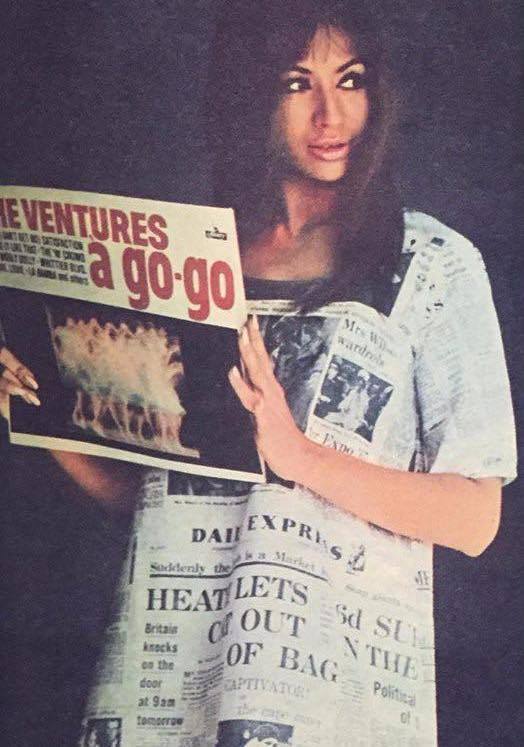
Happy Birthday, #Helen (21/11).
Helen's foray into Bollywood began with a little help from a family friend, actress Cuckoo. Starting with group dance roles in movies like "Shabistan" (1951) and "Awaara" (1951), Helen quickly became a regular in the industry. Her talent shone through, earning her solo dance spots in films such as "Alif Laila" (1954) and "Hoor-e-Arab" (1955). Notably, she also appeared as a street singer in "Mayurpankh" (1954).
A significant breakthrough came in 1958 when Helen was just 19. Her performance in the song "Mera Naam Chin Chin Chu" from the film "Howrah Bridge" captured hearts. Sung by Geeta Dutt, this song marked the start of a series of successful projects for Helen. The 1960s and 1970s saw her rise to fame, with Geeta Dutt lending her voice for many of Helen's performances. During this period, Helen often portrayed characters who would perform a song or dance and then exit the plot, paving the way for the film's lead actress.
By 1969, Helen had become a household name, even gracing the cover of Filmfare Magazine. Another prominent singer, Asha Bhosle, frequently provided playback for Helen's performances, especially during the 1960s and early 1970s. Helen's versatility wasn't just limited to dance; she was nominated for the Filmfare Award for Best Supporting Actress in 1965 for her role in "Gumnaam". Her dramatic roles in "China Town" and "Sachaai" (1969), alongside Shammi Kapoor, were box office hits. She also portrayed a compelling character in "Chhote Sarkar" (1974), co-starring Shammi Kapoor and Sadhana. Helen's hit dance numbers included 'Suku Suku' in "Junglee", 'Yamma Yamma' in "China Town", and several others.
Helen's fame wasn't confined to the Indian cinema; she performed on stages in London, Paris, and Hong Kong. In 1973, "Helen, Queen of the Nautch Girls", a 30-minute documentary by Merchant Ivory Films, highlighted her life and career. This was followed by Jerry Pinto's book "The Life and Times of an H-Bomb" in 2006, which won a National Film Award. Writer Salim Khan played a key role in Helen's career, casting her in several films he co-scripted. Her performance in "Lahu Ke Do Rang" (1979) earned her the Filmfare Award for Best Supporting Actress. In recognition of her contributions, Helen received the Filmfare Lifetime Achievement Award in 1999.
Though she officially retired in 1983, Helen made occasional appearances in films like "Khamoshi: The Musical" (1996) and "Mohabbatein" (2000). She also appeared alongside her real-life step-son #SalmanKhan in "Hum Dil De Chuke Sanam" and in "Humko Deewana Kar Gaye" (2006). Her contributions were further acknowledged when she was selected for the Padma Shri in 2009, alongside Aishwarya Rai and Akshay Kumar. Helen also served as a judge in the semifinals and finals of India's 2009 "Dancing Queen" television series.
12 notes
·
View notes
Text
Watch "Yeh Parda Hata Do ft. DJM | Asha Bhosle | Mohammed Rafi | old Hindi Songs| Mohammad Rafi Hit Songs" on YouTube
youtube
3 notes
·
View notes
Text
Price: [price_with_discount] (as of [price_update_date] - Details) [ad_1] Step into the captivating realm of Hindi film music with "Hindi Film Hits," a remarkable music CD that showcases timeless classics. Each song in this collection encapsulates themes of love, yearning, and nostalgia, resonating across generations. You can immerse yourself in the soulful eminence of Mohd. Rafi, bask in the soothing voice of Lata Mangeshkar, groove to the infectious energy of Kishore Kumar, enjoy the charming playfulness of Asha Bhosle, and be enamored by the vocal jugglery of R. D. Burman. Whether you're a Bollywood fan or reminiscing about the past, this collection is a must-have addition to your music library. Allow yourself to be enchanted by these legendary artists and immerse yourself in a world where every track unfolds a story, and each melody evokes cherished memories. Item Weight : 0.1 g Manufacturer : Inreco, Inreco Entertainmet Pvt.Ltd, 6/1,, Akrur Dutta Lane, Kolkata-700012, P.No-2236-1854, M.NO-9330958736 Studio : Inreco ASIN : B0CQRBK3N7 Country of Origin : India Packer : Inreco Item Weight : 0.1 g Net Quantity : 1.00 count [ad_2]
0 notes
Text
Best Indian Singers of All Time – Legends of Music
India, with its rich cultural heritage, has given birth to some of the most extraordinary musical talents in the world. Over the decades, many singers have mesmerized audiences with their soulful voices, timeless melodies, and exceptional versatility. From classical maestros to Bollywood playback legends, Indian singers have left an indelible mark on the global music industry. This article celebrates the Best Indian Singers of All Time, who have shaped the landscape of Indian music and continue to inspire generations.

Famous Indian Singers and Their Most Iconic Songs
1. Lata Mangeshkar – The Nightingale of India
No list of the Best Indian Singers is complete without mentioning Lata Mangeshkar. With a career spanning over seven decades, she recorded thousands of songs in multiple languages. Her melodious voice and impeccable control over notes made her an iconic figure in Indian playback singing. Songs like Lag Jaa Gale, Ajeeb Dastan Hai Yeh, and Tere Bina Zindagi Se remain evergreen classics.
2. Kishore Kumar – The Versatile Genius
Kishore Kumar was not just a singer but also an actor, composer, and director. His ability to switch between various genres effortlessly made him one of the most celebrated playback singers in Bollywood. Songs like Mere Sapno Ki Rani, Zindagi Ek Safar, and Pal Pal Dil Ke Paas continue to captivate audiences. His yodeling technique and natural energy set him apart from his contemporaries.
3. Mohammad Rafi – The Voice of God
Mohammad Rafi's soulful voice and ability to adapt to different styles made him one of the Best Indian Singers of all time. From romantic ballads to patriotic anthems, qawwalis to classical renditions, he did justice to every genre. Songs like Chaudhvin Ka Chand, Baharon Phool Barsao, and Kya Hua Tera Wada are timeless masterpieces.
4. Asha Bhosle – The Queen of Versatility
Asha Bhosle, the younger sister of Lata Mangeshkar, is known for her versatility. Whether it was peppy cabaret numbers, ghazals, or soulful melodies, Asha Bhosle excelled in every genre. Some of her most iconic songs include Dum Maro Dum, Piya Tu Ab To Aaja, and In Aankhon Ki Masti. Her collaborations with music composers like R.D. Burman revolutionized Bollywood music.
5. Manna Dey – The Classical Virtuoso
Manna Dey was one of the finest classical singers in Indian playback history. His deep knowledge of Hindustani classical music gave his songs a unique richness. Songs like Laaga Chunari Mein Daag, Ae Mere Pyare Watan, and Pucho Na Kaise Maine Rain Bitai are proof of his unparalleled talent.
6. S.P. Balasubrahmanyam – The Voice of South India
S.P. Balasubrahmanyam, popularly known as SPB, was a legendary singer in Indian cinema, predominantly known for his contributions to Tamil, Telugu, Kannada, Hindi, and Malayalam music. His songs, such as Tere Mere Beech Mein, Swathi Muthyam, and Roja Janeman, remain all-time favorites. His smooth, soulful voice won millions of hearts.
7. Sonu Nigam – The Modern-Day Legend
Sonu Nigam is one of the finest singers of contemporary times. Known for his melodious and expressive voice, he has delivered unforgettable songs such as Abhi Mujh Mein Kahin, Kal Ho Na Ho, and Sandese Aate Hain. His ability to sing in different styles and his command over classical music make him a true icon of modern playback singing.
8. Shreya Ghoshal – The Melody Queen of Today
Shreya Ghoshal is one of the most successful female playback singers of the 21st century. Her journey began with Devdas, and she has since given us countless hits, including Agar Tum Mil Jao, Teri Ore, and Sun Raha Hai Na Tu. Her voice is often compared to legends like Lata Mangeshkar and Asha Bhosle.
9. Arijit Singh – The Heartthrob of Indian Music
Arijit Singh has become the voice of romance in modern Bollywood. His soulful renditions have made him a household name. Songs like Tum Hi Ho, Channa Mereya, and Raabta have cemented his place among the Best Indian Singers of all time. His ability to evoke deep emotions through his singing is his biggest strength.
10. P. Susheela – The Nightingale of South India
P. Susheela is one of the most revered playback singers in South Indian cinema. She has recorded thousands of songs in Tamil, Telugu, Kannada, and Malayalam. Songs like Paal Polave, Aalayamaniyin Osaiyai, and Ennai Konjam Maatri showcase her melodious voice and impeccable singing skills.
11. Mukesh – The Voice of Tragedy
Mukesh was known for his deep, emotional voice, which suited melancholic songs perfectly. His association with actor Raj Kapoor led to some of the most memorable songs in Bollywood history. Tracks like Jeena Yahan Marna Yahan, Kahin Door Jab Din Dhal Jaye, and Dost Dost Na Raha still touch the hearts of millions.
12. Hariharan – The Ghazal Maestro
Hariharan is one of the finest Indian singers known for ghazals, playback singing, and fusion music. His songs like Tu Hi Re, Roja Janeman, and Krishna Nee Begane Baro have a unique appeal that blends classical and contemporary styles.
Conclusion
India has been blessed with some of the greatest voices in the world. These Best Indian Singers have not only defined the essence of Indian music but also inspired countless artists across generations. Their contributions have made Indian music a treasure trove of emotions, melody, and timeless artistry. Whether through classical renditions, Bollywood melodies, or contemporary hits, their voices will continue to resonate with music lovers for generations to come.
0 notes
Text
Mohammed Rafi and the Magic of Romantic Melodies
When we think of Bollywood’s golden era, a few names stand out as legends who shaped its identity. Among them, Mohammed Rafi holds a special place as a singer whose voice transcended generations. Born on December 24, 1924, in Kotla Sultan Singh near Amritsar, Rafi’s journey from a small village to becoming the most celebrated playback singer in Indian cinema is nothing short of extraordinary. His melodious voice, incredible versatility, and dedication to his craft made him an icon whose songs continue to touch millions of hearts worldwide.
This article explores how Rafi defined an era of Indian music, his contributions to Bollywood, and the lasting legacy of his unmatched talent.
A Humble Beginning
Mohammed Rafi’s life began in a modest household in Punjab, where his love for music was evident from a young age. Legend has it that Rafi was inspired by a wandering fakir who sang soulful tunes in his village. This early exposure to music planted the seeds of a passion that would later blossom into a legendary career.
Rafi’s family recognized his potential and supported his ambitions, leading him to train under esteemed musicians like Ustad Bade Ghulam Ali Khan and Firoze Nizami. His rigorous training in classical music became the foundation of his versatile singing style, which allowed him to perform effortlessly across various genres. Despite his growing talent, Rafi remained humble, a trait that endeared him to colleagues and fans alike.
Rise to Stardom in Bollywood
Rafi’s Bollywood journey began in 1944 when he sang for the Punjabi film Gul Baloch. However, his big break came in 1946 with the song “Tera Khilona Toota Balak” in Anmol Ghadi, composed by Naushad Ali. This marked the beginning of a partnership that would produce some of the most iconic songs in Indian cinema.
Rafi’s golden era coincided with Bollywood’s rise during the 1950s and 60s. Collaborating with renowned composers such as Shankar-Jaikishan, S.D. Burman, and O.P. Nayyar, Rafi lent his voice to leading actors like Dilip Kumar, Dev Anand, and Shammi Kapoor. His ability to adapt his singing style to suit the personality of the actor on screen was unparalleled, earning him the reputation of being Bollywood’s most versatile playback singer.
A Voice for Every Mood
One of Rafi’s greatest strengths was his ability to convey a spectrum of emotions. Whether it was the romantic charm in “Chaudhvin Ka Chand Ho,” the spiritual depth in “Man Tarpat Hari Darshan Ko Aaj,” or the playful mischief in “Sar Jo Tera Chakraye,” Rafi’s voice captured the essence of every mood.
He was equally adept at soulful ghazals, energetic dance numbers, and heart-wrenching ballads. Songs like “Kya Hua Tera Wada” and “Dil Deke Dekho” highlight his ability to evoke deep emotion, while tracks like “Yahoo! Chahe Koi Mujhe Junglee Kahe” demonstrate his knack for high-energy performances. This versatility set him apart from his contemporaries and ensured that his voice became the heartbeat of Bollywood music.
Timeless Collaborations
Rafi’s collaborations with composers and lyricists played a crucial role in shaping Bollywood’s musical landscape. His long association with Naushad resulted in evergreen classics like “O Duniya Ke Rakhwale” and “Madhuban Mein Radhika Nache Re.” His work with Shankar-Jaikishan gave us gems like “Baharon Phool Barsao.”
Notably, Rafi’s duets with female playback singers like Lata Mangeshkar and Asha Bhosle are considered some of the finest in Indian music history. Whether it was the romantic “Aaja Sanam” with Lata or the lively “Aankhon Hi Aankhon Mein” with Asha, Rafi’s voice complemented his co-singers perfectly, creating magical musical moments.
Challenges and Triumphs
Like any artist, Rafi faced challenges throughout his career. The rise of Kishore Kumar during the 1970s led to increased competition, yet Rafi’s resilience and dedication never wavered. He continued to deliver hits, such as “Pardah Hai Pardah” from Amar Akbar Anthony and “Main Zindagi Ka Saath” from Hum Dono. His humility and professional ethics won him admiration from peers and music directors alike.
Despite his immense success, Rafi remained grounded, always prioritizing his craft over personal gain. It is said that he would often refuse payment for songs if the producer faced financial difficulties, highlighting his generous and selfless nature.
The Legacy of a Legend
Rafi’s untimely death in 1980 left a void in the Indian music industry that remains unfilled. Yet, his legacy lives on through the countless songs he recorded over his career. He received several awards, including the Padma Shri in 1967, in recognition of his contribution to Indian music.
Today, Rafi’s songs continue to resonate with audiences of all ages. His music is a bridge between generations, played at family gatherings, weddings, and cultural events. Even decades after his passing, Rafi’s voice has an unmatched ability to evoke emotions and connect people through the universal language of music.
Conclusion
Mohammed Rafi voice is not just a part of Bollywood’s history; it is a symbol of its golden era. His ability to embody the essence of every song, combined with his humility and dedication, made him a legend whose influence extends far beyond the boundaries of cinema. As we listen to his timeless tracks today, we are reminded of a time when music was pure, heartfelt, and unforgettable.
Mohammed Rafi’s songs are more than just melodies; they are memories etched in time. Which Rafi classic is your favorite? Share your thoughts and memories in the comments below. And if you’re new to his music, take a journey through his discography to discover the magic of a voice that truly defined an era.
0 notes
Link
#90splaybacksingers#AlkaYagnik#Bhajans#Bollywoodmusic#Classicalmusictraining#Father#FilmfareAwards#GuinnessWorldRecords#Health#Hindicinema#IconicBollywoodsongs#Indianplaybacksinger#KumarSanu#Mother#NationalFilmAwards#UditNarayan#YouTubeMusicCharts
0 notes
Text
"The Magic of Music in Desi Cinema: How Songs Define the Soul of Indian Films"

Introduction: No other film industry in the world celebrates music as much as Desi Cinema. Whether it's the grand, orchestrated musical numbers of Bollywood or the soulful ballads in regional films, music is the heartbeat of Indian cinema. In this post, we'll take a deep dive into how music has shaped and defined desicinema, from its early beginnings to modern-day hits.
The Role of Music in the Golden Age:
The 1950s and 1960s were a defining period for Indian film music. Music directors like S.D. Burman, Shankar Jaikishan, and Naushad composed melodies that became immortal. Songs from films like Mughal-e-Azam (1960), Awaara (1951), and Pyaasa (1957) didn’t just complement the narrative but enhanced the emotional depth of the story.
The early Bollywood musicals were often built around the songs themselves. Bollywood songs became a language in their own right, often conveying emotions too complex to be expressed through dialogue. Lata Mangeshkar and Kishore Kumar, the voices of the era, gave life to these songs, making them iconic.
The '70s and '80s: The Rise of Disco & Playback Singing:
The 1970s and 1980s saw an interesting shift in Bollywood’s musical landscape. Disco music entered the scene with tracks like I’m Your Baby Tonight from The Burning Train (1980) and Disco Dancer (1982), marking a more international sound. Meanwhile, playback singers like Kishore Kumar, Mohammad Rafi, and Asha Bhosle dominated the scene, creating songs that were as iconic as the films themselves.
In the 1980s, films like Sholay (1975), Amar Akbar Anthony (1977), and Qurbani (1980) brought forward energetic numbers that resonated with the masses, giving Bollywood a new sound. But it wasn’t just the music; the choreography, the costumes, and the setting also came to define the genre. The popularity of the "item number" emerged around this time, a tradition that continues to define Bollywood today.
The '90s: The Era of Romance and Soundtracks:
The 1990s were marked by an explosion of musical blockbusters. The classic pairing of melodious love songs with visual grandeur became a hallmark of Bollywood during this period. Composers like Jatin-Lalit, Nadeem-Shravan, and A.R. Rahman introduced a range of sounds, from the soulful romantic ballads of Dilwale Dulhania Le Jayenge (1995) to the more contemporary pop-infused melodies of Dil Se (1998).
A.R. Rahman, in particular, revolutionized the industry with his fusion of Western and Indian music, creating scores that broke conventional barriers. His iconic work in Roja (1992) and Taal (1999) not only changed the music industry but also brought a new era of musical experimentation in Indian films.
Modern Day: The Fusion of Genres and Global Influence:
Today, Desi Cinema is characterized by a mix of traditional music with international styles. Composers like Pritam, Amit Trivedi, and A.R. Rahman continue to dominate the soundscape, but the influence of global genres like hip-hop, rap, electronic dance music (EDM), and even reggaeton can be felt in contemporary tracks. Bollywood soundtracks now embrace a wider range of genres, reflecting the evolving tastes of global audiences.
The rise of digital music platforms like Spotify and YouTube has made desicinemas film music more accessible than ever before, allowing audiences to discover and enjoy songs from all over India. In the past decade, regional cinema has seen a rise in musical experimentation as well, with composers like Ilaiyaraaja (Tamil).
Conclusion:
Music is the lifeblood of Desi Cinema. It’s what makes us laugh, cry, and dream alongside our favorite characters. From the majestic orchestral compositions of the 50s to the pulsating beats of today, the role of music in Indian cinema cannot be overstated. In Desi films, music is not just a background element—it’s an essential part of the narrative, blending seamlessly with the story to create an experience that is distinctly Indian, yet universally relatable. Whether you're humming a tune from a Bollywood blockbuster or tapping your feet to a Tamil chartbuster, music continues to be the soul of Indian cinema.
0 notes
Text
A-T-4 162 3 More Sleeps
1984 was a stellar year for horror franchises. Comedy horror classics Ghostbusters and Gremlins both began. Arnold Schwarzenegger punches the big screen in the Science Fiction horror The Terminator. The slasher Friday The 13th attempted to make part 4 Friday the 13th: The Final Chapter it's, well, final chapter but it would put out another six films in the series and have a reboot. Wes Craven has a busy year releasing, The Hills Have Eyes Pt. 2, Invitation To Hell, and introducing us to Freddie in the first episode of A Nightmare On Elm Street. Another Stephen King short Children Of The Corn is adapted and would go on to spawn eight sequels, a remake and a reboot
What was the master John Carpenter doing in 1984? He made Starman
This is a blog about music though and there was some great music made for horror movies that came out in 1984
youtube
Chocky Theme. Chocky was a British children's TV series based on a book by John Wyndham. It scared the hell out of me as a child
youtube
Tangerine Dream - Charley The Kid the first of a four tracks I've selected from Tangerine Dreams excellent soundtrack for another film based on a Stephen King novel Firestarter
youtube
Tangerine Dream - Shop Territory
youtube
Tangerine Dream - Flash Final
youtube
Tangerine Dream - Crystal Voice
youtube
John Murphy and Martin Cooper - This Aint No Disco from Douglas Cheek’s movie C.H.U.D. (cannibalistic humanoid underground dwellers) - shame this track doesn't go somewhere
youtube
Ajit Singh - Main Akeli Raat Jawan from Hindi horror film Purana Mandir. Sung by Asha Bhosle. There a video for the song here
youtube
Paul Sabu - Zombies Revenge from less known comedy horror Hard Rock Zombies. Paul Sabu began his career with disco hits such as Debbie Jacobs "Undercover Lover" and would record and produce many pop artists throughout the 1980s. He fronted the hard rock bands Sabu and Only Child
youtube
Donald Rubenstein - Tales From The Darkside Theme Beginning in 1984 George A Romero's TV horror anthology Tales From The Darkside carries on the grand tradition begun by the Twilight Zone
1 note
·
View note
Text
New Hindi Vinyl Records"
Discover the Latest Hindi Vinyl Records: A Journey into Timeless Melodies
Vinyl records are experiencing a revival worldwide, and India is no exception. For Hindi music lovers, there's something uniquely special about listening to beloved tracks on vinyl. The warmth, richness, and nostalgia that vinyl offers cannot be replicated by digital formats. At Drocer Records, we're thrilled to present our latest collection of Hindi vinyl records. Let's explore the exciting new releases, classic reissues, and exclusive editions that will make perfect additions to your collection.
The Vinyl Revival: Why Hindi Music Lovers are Turning to Vinyl Records
The vinyl revival has taken the music world by storm, and Hindi music enthusiasts are embracing this trend with open arms. Here’s why:
Superior Sound Quality: Vinyl records offer a depth and warmth in sound that digital formats often lack.
Tangible Connection: Holding a vinyl record, admiring the album art, and carefully placing it on the turntable creates a tactile experience that digital music cannot match.
Nostalgia: For many, vinyl records evoke memories of a bygone era, bringing a sense of nostalgia and connection to the past.
The resurgence of vinyl records is not just about the music; it's about the entire experience.
Must-Have New Hindi Vinyl Records for Your Collection
Our collection at Drocer Records includes some of the most anticipated new releases in Hindi music. Here are a few highlights:
1. A.R. Rahman’s Latest Masterpiece:
Album: "Dil Bechara"
Notable Tracks: “Dil Bechara,” “Taare Ginn”
Overview: A soulful soundtrack that beautifully complements the emotional narrative of the film.
2. Shreya Ghoshal’s New Album:
Album: "Gulzar In Conversation With Tagore"
Notable Tracks: “Baaghon Mein Bahaar Hai,” “Chupke Se”
Overview: A collaboration with legendary lyricist Gulzar, this album is a celebration of Tagore’s poetry set to music.
3. Arijit Singh’s Romantic Collection:
Album: "Love Stories"
Notable Tracks: “Tum Hi Ho,” “Raabta”
Overview: A compilation of Arijit Singh’s most heart-touching romantic songs, now available on vinyl.
These new releases are a testament to the enduring appeal of Hindi music on vinyl
.
Classic Hindi Albums Making a Comeback on Vinyl
Vinyl enthusiasts will be thrilled to know that several iconic Hindi albums have been reissued on vinyl. These classic records are a must-have for any serious collector.
1. Lata Mangeshkar’s Timeless Hits:
Album: "Lata Mangeshkar – The Golden Collection"
Overview: A compilation of Lata Mangeshkar’s greatest hits, this reissue captures the magic of her voice in its purest form.
2. Kishore Kumar’s Evergreen Melodies:
Album: "Kishore Kumar – Greatest Hits"
Overview: Featuring some of Kishore Kumar’s most beloved songs, this vinyl reissue is a tribute to his unmatched talent.
3. Asha Bhosle’s Classic Tracks:
Album: "Asha Bhosle – Forever Young"
Overview: This collection of Asha Bhosle’s hits showcases her versatility and enduring appeal.
These reissues bring classic Hindi music to a new generation of vinyl enthusiasts while allowing longtime fans to rediscover their favorite tunes.
0 notes
Text
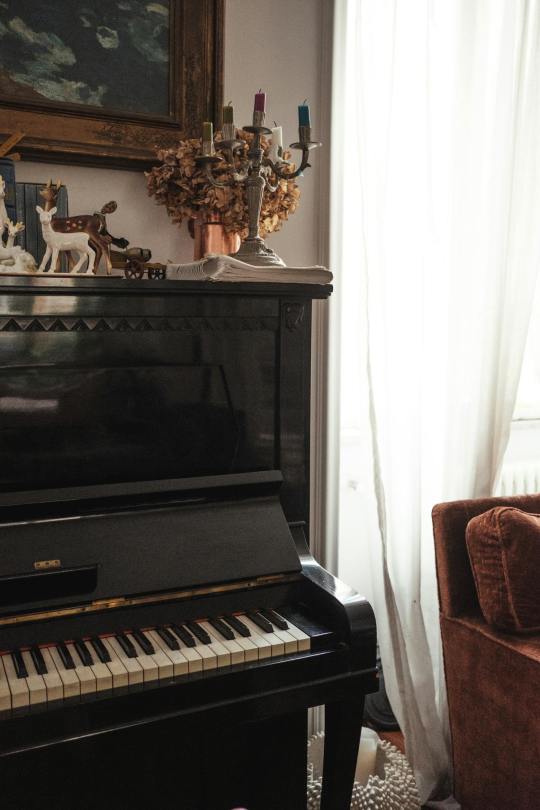
Experience the magic of classic Bollywood with our handpicked old Hindi songs list, a treasure trove of melodies that defined an era. Journey back in time as Rafi's velvety voice and Asha Bhosle's melodious tones serenade you through timeless hits. From the hauntingly beautiful compositions of R.D. Burman to the soul-stirring lyrics of Gulzar, each song is a masterpiece of its own. Whether you're reminiscing about lost love or celebrating life's joys, our collection of old Hindi songs is your passport to an era of musical brilliance. Dive into nostalgia and let the melodies of yesteryears sweep you away.
1 note
·
View note
Text
Asha Bhosle Unveils 'VOICE OF THE NATION,' a Book About Lata Mangeshkar's Life

In a grand event at her Mumbai residence, the renowned singer Asha Bhosle launched the book "Voice of the Nation," which narrates the life of Lata Mangeshkar. The book is an English translation of the Assamese book "Asomi Ailoi Pranam," authored by Devajit Bhuyan. Having been an instant hit with several editions, senior journalist Achyut Kumar Patowary translated the book into English, and its publication was made possible with the assistance of Dhiraj Goswami from Assam Book Hive, a leading publishing house in Guwahati. Assam Book Hive had also published the original Assamese version.
Asha Bhosle, accompanied by Lata Mangeshkar's sister Usha Mangeshkar, spoke highly of the book, commending its special effort in portraying the story of the "tune empress." Asha Bhosle fondly recalled the strong connection between Dr. Bhupen Hazarika and Lata Mangeshkar, expressing her desire to visit Assam and applauding the book for maintaining the connection between Mangeshkar's family and Assam.
Discussing Lata Mangeshkar's impact on Indian music, Asha Bhosle called her "incomparable." She expressed concern about current music trends and appreciated the book for preserving Lata Didi's timeless songs.
Despite being 90 years old, Asha Bhosle remains active in her work, crediting the lessons she learned from Lata Didi. She aims to stay relevant and move with the times, valuing the wisdom from her older sister. Usha Mangeshkar, present at Lata Mangeshkar's home in Prabhukunj, described the book as a witness to history, filled with many untold stories and pictures from Lata Didi's life. She found it fascinating and wished her sister could see the book. Usha Mangeshkar recognized Lata Mangeshkar's unique contribution to the Indian music industry, highlighting the lasting impact her sister has had.
Bollywood celebrities Suresh Wadekar and Rupkumar Rathore also praised "VOICE OF THE NATION," emphasizing the importance of such books in introducing Lata Mangeshkar's life and talents to younger generations. They expressed gratitude to the author, Devajit Bhuyan, for his exceptional work.
The English version of "VOICE OF THE NATION" is published by Assam Book Hive and will be available at the upcoming Guwahati Book Fair. This marks a significant moment in sharing Lata Mangeshkar's legacy with a wider audience.
0 notes
Text
Lata Mangeshkar was one of the most important musicians in modern (i.e. post-independence) India, and I'm saying this as a kind of non-fan (there rlly is no way to completely be a disliker of her music or disinterested in her work at all for a majority of Indians). She and her family were the most prominent musician family in Marathi and Hindi cinema up till a decade and a half ago. This woman near completely defined the sound of cinema for multiple generations of people throughout the Indian subcontinent and the *world*. She was in the Guinness Book of World records before being replaced by her sister Asha Bhosle, as the most recorded artist in history. She recorded like 50,000 songs in FOURTEEN different languages AND was an occasional music composer along with being the most celebrated female playback singer of her time. She and her sisters were singing playback for actresses decades younger than them up till her death. Here are a few of my favourite songs and music videos featuring her!
(👆🏼in Marathi)
(👆🏼in Hindustani)


Brigitte Bardot (1934-) solo - primarily an actress Songs: "La fille de paille," "Soleil de ma vie" Propaganda: "She did one song of questionable quality, but we're not here to talk music, we're here to talk hotness and she was a sex symbol for a reason!"
Lata Mangeshkar (1929-2022) solo Songs: "Aayega Aanewaala," "Dil Mera Toda, Mujhe Kahin Ka Na Chhora" Propaganda: "She was absolutely stunning in her youth" "She's a really important musician in India!"
Visual Propaganda for Brigitte Bardot:

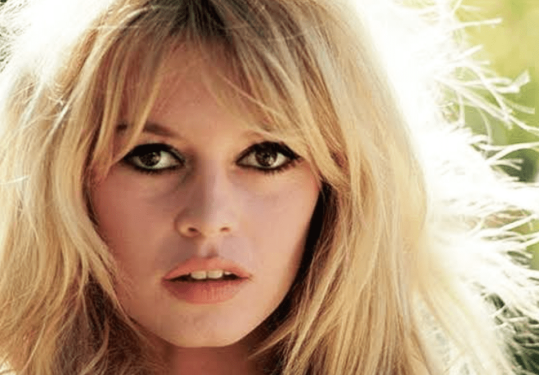

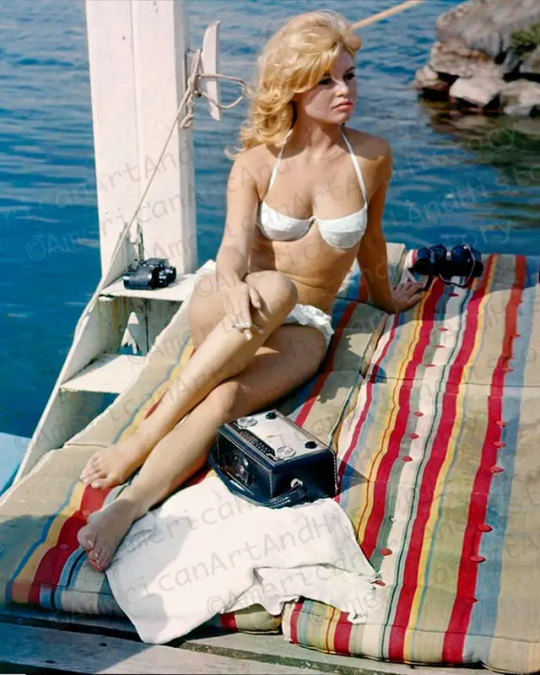

Visual Propaganda for Lata Mangeshkar:


87 notes
·
View notes
Text
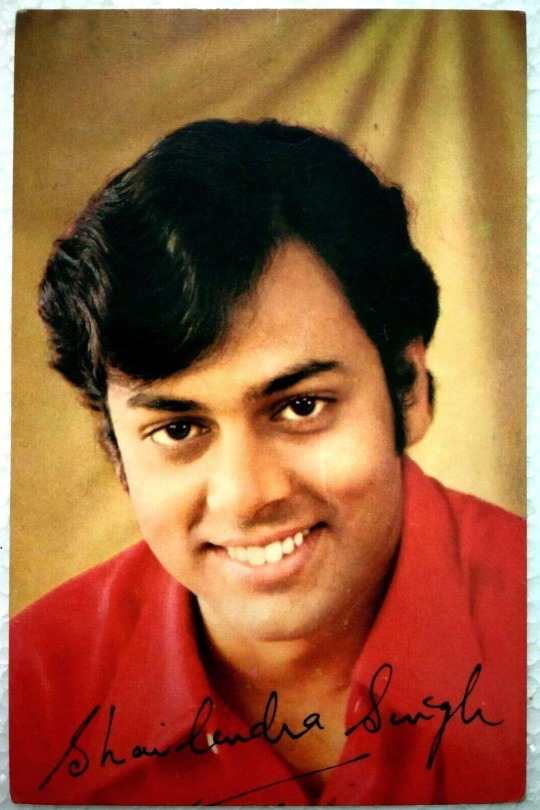
Main shayar to nahin, Main shayar to nahin Magar ae haseen Jab se dekha maine tujhko Mujhko shayari aa gayi’
Birthday wishes to Bollywood’s yesteryear singer Shailendra Singh (04/10).
Shailendra Singh was born in Mumbai, India, on October 4, 1952, into a Punjabi family. Pursuing his passion for acting, he enrolled in the Film and Television Institute of India in Pune. Alongside, he trained in classical Hindustani music under the guidance of a Guru.
His singing debut came unexpectedly during his second year at FTII, with the film “Bobby.” This opportunity was provided by #RajKapoor, and the song “Main Shayar To Nahin” from the film became an instant hit. Singh continued to make waves in the music industry, with hits like “Humne Tumko Dekha” from “Khel Khel Mein” and his collaboration with Asha Bhosle for “Jaane Do Na” in “Saagar,” which was praised for its sensuality.
In addition to his singing, Singh also ventured into acting. He appeared in films such as “Agreement” (with Rekha) and “Do Jasoos.” He also starred in the Bengali film “Ajasra Dhanyabaad,” opposite Aparna Sen.
0 notes
Text
Tu Tu Hai Wahi Piano Notes | Yeh Vaada Raha

Tu Tu Hai Wahi Piano Notes
Notes :- Tu tu hai wahi dil ne jisse apna kaha E4 F4# G4 F4# E4 C5 B4 A4 G4 F4# D4 E4 F4# E4 D4 B4 Tu hai jahan main hoon wahan A4 G4 F4# G4 E4 F4# G4 F4# E4 A4 Ab to yeh jeena tere bin hai sazaa G4 F4# E4 D4# B3 D4# F4# B4 A4 B4 A4 G4# G4# Ho mil jaayein is tarah, do leharein jis tarah G4# G4# A4 A4 A4 A4 A4 B4 C5, B4 A4 G4 G4 G4 A4 B4 Ho mil jaayein is tarah, do leharein jis tarah C5 B4 A4 A4 A4 A4 A4 B4 C5 D5 C5, B4 A4 G4 G4 G4 A4 B4 Phir ho na judaa haan yeh vaada raha G4 F4# E4 F4# G4 F4# E4 A4 G4 F4# E4 F4# D4 F4# F4# E4 Main aawaz hoon to, tu hai geet mera B4 B4 E5 E5 E5 E5 D5 D5 E5, B4 A4 D5 A4 B4 B4 Jahan se nirala, manmeet mera B4 B4 E5 E5 E5 E5 D5 D5 E5, B4 A4 D5 A4 B4 B4 C5 B4 A4 Mil jaayein is tarah, do leharein jis tarah A4 A4 A4 A4 B4 C5, B4 A4 G4 G4 G4 A4 B4 Ho mil jaayein is tarah, do leharein jis tarah C5 B4 A4 A4 A4 A4 A4 B4 C5 D5 C5, B4 A4 G4 G4 G4 A4 B4 Phir ho na judaa haan yeh vaada raha G4 F4# E4 F4# G4 F4# E4 A4 G4 F4# E4 F4# D4 F4# F4# E4 Tu tu hai wahi dil ne jisse apna kaha E4 F4# G4 F4# E4 C5 B4 A4 G4 F4# D4 E4 F4# E4 D4 B4 Tu hai jahan main hoon wahan A4 G4 F4# G4 E4 F4# G4 F4# E4 A4 Ab to yeh jeena tere bin hai sazaa G4 F4# E4 D4# B3 D4# F4# B4 A4 B4 A4 G4# G4#
About Song :-
"Tu Tu Hai Wahi" is a classic Bollywood song from the movie "Yeh Vaada Raha," which was released in 1982. The film was directed by Kapil Kapoor and starred Rishi Kapoor and Tina Munim in the lead roles. The song "Tu Tu Hai Wahi" is known for its melodious tune and romantic lyrics. Here is some information about the song: Singers: "Tu Tu Hai Wahi" was sung by the legendary playback singers Kishore Kumar and Asha Bhosle. Their duet added depth and soul to the song. Lyricist: The lyrics for the song were penned by Gulshan Bawra. The lyrics are romantic and convey the themes of love and longing. Music: The music for "Tu Tu Hai Wahi" was composed by R.D. Burman, one of the most celebrated music composers in the Indian film industry. R.D. Burman's compositions are known for their innovation and timeless appeal. Picturization: The song is picturized on the lead characters, Vikram (played by Rishi Kapoor) and Sunita (played by Tina Munim). It showcases their love story and captures the essence of their romantic moments. Significance: "Tu Tu Hai Wahi" became an instant hit and is remembered as one of the most iconic songs of the early 1980s. It added to the overall success of the film "Yeh Vaada Raha" and is cherished by fans of Bollywood music. Plot Context: In the movie, "Tu Tu Hai Wahi" appears during a pivotal moment in the narrative, where the characters Vikram and Sunita express their love for each other. The film revolves around themes of love, separation, and reunion. "Yeh Vaada Raha" is a romantic drama that explores the enduring love story between Vikram and Sunita, separated in their youth but reunited years later. The film's soundtrack, including "Tu Tu Hai Wahi," played a significant role in its success and is still beloved by fans of Hindi cinema. The song remains popular to this day and is considered a classic in the world of Indian film music. Its timeless melody, coupled with the enchanting voices of Kishore Kumar and Asha Bhosle, continues to evoke nostalgia and is often played at various cultural events and functions. Read the full article
0 notes
Text
Himesh Reshammiya
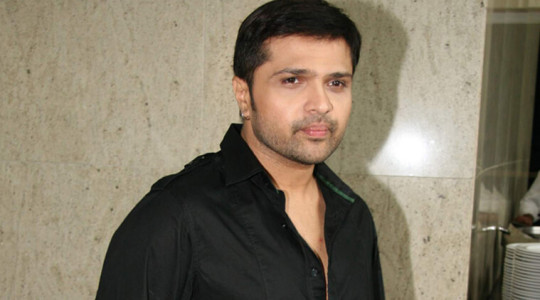
This Biography is about one of the best Professional Actor of the world Himesh Reshammiya including his Height, weight, Age & Other Detail… Express info Real Name Himesh Reshammiya Nickname Himesh bhai, HR Profession Actor, Music Director, Singer, Writer and Producer Age (as in 2023) 53 Years old Physical Stats & More Info Height in centimeters- 170 cm in meters- 1.70 m in Feet Inches- 5’ 7” Weight in Kilograms- 70 kg in Pounds- 154 lbs Body Measurements - Chest: 40 Inches - Waist: 32 Inches - Biceps: 14 Inches Eye Colour Black Hair Colour Black Personal Life Of Himesh Reshammiya Date of Birth 23 July 1973 Birth Place Mumbai, Maharashtra, India Zodiac sign/Sun sign Leo Nationality Indian Hometown Bhavnagar, Gujarat, India School Hill Grange High School, Mumbai College N/A Educational Qualifications N/A Debut Film Debut : Aap Kaa Surroor (2007) Music Debut : Bandhan (1998) Family Father- Vipin Reshammiya (Music Director) Mother- Madhu Reshammiya (Housewife) Brother- Not Known (Elder, Died) Sister- N/A Religion Hindu Address Mumbai Hobbies Theatre plays Controversies • He once said that Mukesh, Nusrat Fateh Ali Khan and R.D.Burman had a nasal style of singing but hadn't produced so many hits like him, after which Asha Bhosle said that she wants to slap him. • Sonu Nigan once said that competing with Himesh is an insult. • In 2007, he visited the shrine of Moinuddin Chishti by wearing a burqa to avoid fans and later had to apologize for offending religious sentiments. • He was accused of copyright violation of Tanhaiyaan song in Aap Ka Suroor from Boney Kapoor’s film Milenge Milenge. Though Himesh clarified that he offered this song to Boney Kapoor but he didn't included in Milenge Milenge and therefore he used it. Favourite Things Of Himesh Reshammiya Favourite Food Grilled Chicken Favourite Actor Salman Khan Favourite Film Diwale Dulhaniya Le Jayenge Favourite Color Orange Favourite Perfume Cool Water by Davidoff Favourite Destination Switzerland Girls, Affairs and More Of Himesh Reshammiya Marital Status Separated (in 2016) Affairs/Girlfriends Sonia Kapor (Actress) Wife Komal Reshammiya Children Daughter- N/A Son- Swayam Money Factor Of Himesh Reshammiya Salary 10 Crore/film (INR) 2 Crore/album (INR) Net Worth $4 million This Biography Written By www.welidot.com Read the full article
0 notes